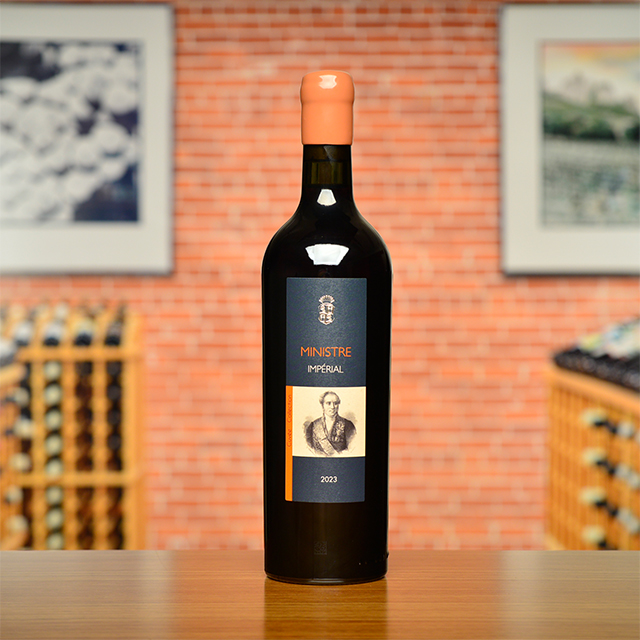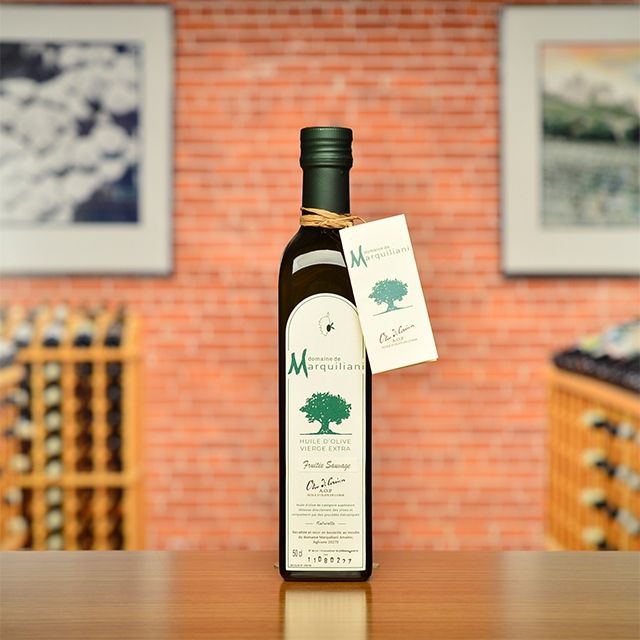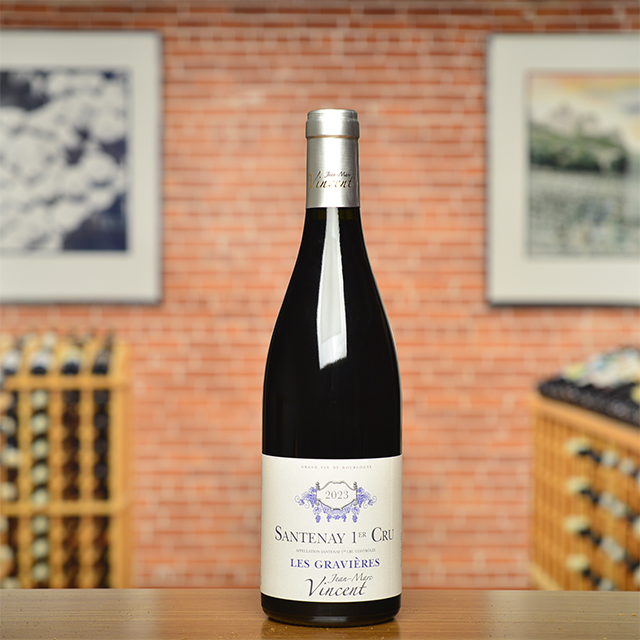Notify me
2015 Corse Calvi Rouge “E Prove”
Domaine Maestracci
The wines of some Corsican producers—like Jean-Charles Abbatucci and Yves Canarelli—may appear exotic at first sip, because they are crafted mostly or exclusively with grapes indigenous to the island: varieties such as Sciaccarellu, Niellucciu, and Carcaghjolu Neru. These grapes produce delicious wines that are admittedly different enough to require an open mind and adventurous tongue (not just to taste the wine, but also to pronounce the names). Then there are the wines of Domaine Maestracci, which are more readily understandable for lovers of wines from southern France. Both reds we import from this domaine contain Grenache and Syrah, and you can tell—they feel like the long-lost cousins of reds from Gigondas or Beaumes-de-Venise, separated by 150 miles of land and 150 miles of sea. This irresistibly wild cuvée is a blend of the indigenous grapes Niellucciu and Sciaccarellu, giving it a subtly tart, bright cranberry lift; and more common, southern French grapes, which impart notes of iron, tobacco, black cherries, and pepper. This soulful red may be our best bridge to the beautiful variety of native wines from the Île de Beauté.
—Tom Wolf
| Wine Type: | red |
| Vintage: | 2015 |
| Bottle Size: | 750mL |
| Blend: | 35% Niellucciu, 35% Grenache, 15% Sciacarellu, 15% Syrah |
| Appellation: | Calvi |
| Country: | France |
| Region: | Corsica |
| Producer: | Domaine Maestracci |
| Winemaker: | Camille-Anaïs Raoust |
| Vineyard: | 25 - 40 years |
| Soil: | Clay, Sand, on Granite |
| Aging: | Wine is raised for one year in stainless steel and then one year in foudre or French oak barrels, wine is aged in bottle for 6 months to a year |
| Farming: | Lutte Raisonnée |
| Alcohol: | 14% |
More from this Producer or Region

2018 Vin de France Blanc “Diplomate d’Empire”
France | Corsica
Rich, exotic, and appealing—a monument to the grandeur of the forgotten Corsican varietals.

2023 Vin de France Rouge “Ministre Impérial”
France | Corsica
One of Corsica's finest reds, from a collection of heirloom grape varieties saved from extinction by Abbatucci's father.

2021 Patrimonio Rouge “Grotte di Sole”
France | Corsica
Think classic, spirited Sangiovese with a wilder, slightly darker-fruited, herb-singed character from the ancient seaside maquis-studded limestone.

2020 Vin de France Rouge “Sempre Azezzu”
France | Corsica
Not quite Rhône-like and not quite Corsican, this has the best of both worlds, with plenty of palate-staining black fruit to boot.

2021 Patrimonio Rouge “Mémoria”
France | Corsica
The only Arena cuvée to see barrel-aging features the domaine’s oldest vines.

2024 Patrimonio Blanc “San Giovanni”
France | Corsica
A thirst-quencher with uncommon pedigree.

2022 Patrimonio Blanc “Carco”
France | Corsica
Limestone, sea breeze, and wildflowers: welcome to Patrimonio.

Extra Virgin Olive Oil “Fruité Sauvage”
France | Corsica
From a tiny mill in Corsica’s eastern mountains, Sauvage is wildly peppery and herbaceous.

Extra Virgin Olive Oil “Le Moulin de Pauline”
| Corsica
From a tiny mill in Corsica’s eastern mountains, at once unctuous with a bright, peppery note.

2021 Patrimonio Blanc “Cuvée Sarah”
France | Corsica
This white, raised in demi-muids with malolactic fermentation, flamboyantly shows off the affinity of ripe Vermentinu grapes with a judicious use of wood.
About The Producer
Domaine Maestracci
High in the foothills of Monte Grossu mountain lies the granite plateau of Reginu, an area long known for U Vinu di E Prove–the wine of the Prove. The plateau has been used for vine and olive growing for centuries. In 1945, when the owner of an olive pressing operation packed up his mill, Roger Maestracci saw a golden opportunity and moved in. Within a few years the domaine had established a firm reputation in the area. Roger passed along the reins to his son-in-law, Michel Raoust, who has since handed over the winery to his daughter, Camille-Anaïs. She allows the red at least two years in large oak casks, while the white is bottled young to maintain the freshness of the terroir. These are quintessential Mediterranean food wines.
About The Region
Corsica

I first set foot on the island in 1980. I remember looking down from the airplane window seeing alpine forest and lakes and thinking, uh oh, I got on the wrong plane. Then suddenly I was looking down into the beautiful waters of the Mediterranean. Corsica is a small, impossibly tall island, the tail of the Alp chain rising out of the blue sea.—Kermit Lynch
Kermit’s first trip to the island proved fruitful, with his discovery of Clos Nicrosi’s Vermentino. More than thirty years later, the love affair with Corsica has only grown as we now import wines from ten domaines that cover the north, south, east, and west of what the French affectionately refer to as l’Île de Beauté.
Corsica is currently experiencing somewhat of a renaissance—interest has never been higher in the wines and much of this is due to growers focusing on indigenous and historical grapes found on the island. Niellucciu, Sciarcarellu, and Vermentinu are widely planted but it is now common to find bottlings of Biancu Gentile and Carcaghjolu Neru as well as blends with native varieties like Rossola Bianca, Minustellu, or Montaneccia.
As Kermit described above, Corsica has a strikingly mountainous landscape. The granite peaks top out above 9,000 feet. The terroir is predominantly granite with the exception of the Patrimonio appellation in the north, which has limestone, clay, and schist soils.The wines, much like their southern French counterparts make for great pairings with the local charcuterie, often made from Nustrale, the native wild boar, as well as Brocciu, the Corsican goats milk cheese that is best served within 48 hours of it being made.
More from Corsica or France
Extra Virgin Olive Oil “Fruité Douce”
Domaine de Marquiliani | Corsica
Extra Virgin Olive Oil “Le Moulin de Pauline”
Domaine Marquiliani | Corsica
Extra Virgin Olive Oil “Fruité Sauvage”
Domaine de Marquiliani France | Corsica
2019 Patrimonio Rouge
Domaine Giudicelli France | Corsica
2023 Corse Figari Blanc
Clos Canarelli France | Corsica
2021 Corse Figari Blanc “Amphora”
Clos Canarelli France | Corsica
2017 Vin de France Blanc “Diplomate d’Empire”
Domaine Comte Abbatucci France | Corsica
2021 Vin de France Blanc “Morta Maio”
Jean-Baptiste Arena France | Corsica
2023 Île de Beauté Biancu Gentile “L’Altru Biancu”
Yves Leccia France | Corsica
2022 Patrimonio Rouge “Grotte di Sole”
Jean-Baptiste Arena France | Corsica
2022 Patrimonio Rouge “E Croce”
Yves Leccia France | Corsica
2023 Bonifacio Blanc “Tarra di Sognu”
Clos Canarelli France | Corsica
Extra Virgin Olive Oil “Fruité Douce”
Domaine de Marquiliani | Corsica
Extra Virgin Olive Oil “Le Moulin de Pauline”
Domaine Marquiliani | Corsica
Extra Virgin Olive Oil “Fruité Sauvage”
Domaine de Marquiliani France | Corsica
2019 Patrimonio Rouge
Domaine Giudicelli France | Corsica
2023 Corse Figari Blanc
Clos Canarelli France | Corsica
2021 Corse Figari Blanc “Amphora”
Clos Canarelli France | Corsica
2017 Vin de France Blanc “Diplomate d’Empire”
Domaine Comte Abbatucci France | Corsica
2021 Vin de France Blanc “Morta Maio”
Jean-Baptiste Arena France | Corsica
2023 Île de Beauté Biancu Gentile “L’Altru Biancu”
Yves Leccia France | Corsica
2022 Patrimonio Rouge “Grotte di Sole”
Jean-Baptiste Arena France | Corsica
2022 Patrimonio Rouge “E Croce”
Yves Leccia France | Corsica
2023 Bonifacio Blanc “Tarra di Sognu”
Clos Canarelli France | Corsica
Where the newsletter started

Where the newsletter started
Every three or four months I would send my clients a cheaply made list of my inventory, but it began to dawn on me that business did not pick up afterwards. It occurred to me that my clientele might not know what Château Grillet is, either. One month in 1974 I had an especially esoteric collection of wines arriving, so I decided to put a short explanation about each wine into my price list, to try and let my clients know what to expect when they uncorked a bottle. The day after I mailed that brochure, people showed up at the shop, and that is how these little propaganda pieces for fine wine were born.—Kermit Lynch

















